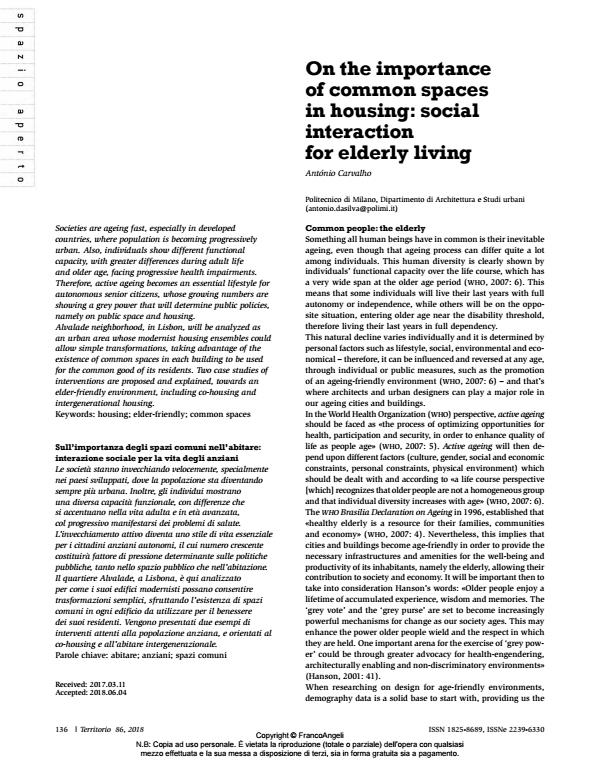On the importance of common spaces in housing: social interaction for elderly living
Journal title TERRITORIO
Author/s António Carvalho
Publishing Year 2019 Issue 2018/86
Language English Pages 10 P. 136-145 File size 564 KB
DOI 10.3280/TR2018-086018
DOI is like a bar code for intellectual property: to have more infomation
click here
Below, you can see the article first page
If you want to buy this article in PDF format, you can do it, following the instructions to buy download credits

FrancoAngeli is member of Publishers International Linking Association, Inc (PILA), a not-for-profit association which run the CrossRef service enabling links to and from online scholarly content.
Societies are ageing fast, especially in developed countries, where population is becoming progressively urban. Also, individuals show different functional capacity, with greater differences during adult life and older age, facing progressive health impairments. Therefore, active ageing becomes an essential lifestyle for autonomous senior citizens, whose growing numbers are showing a grey power that will determine public policies, namely on public space and housing. Alvalade neighborhood, in Lisbon, will be analyzed as an urban area whose modernist housing ensembles could allow simple transformations, taking advantage of the existence of common spaces in each building to be used for the common good of its residents. Two case studies of interventions are proposed and explained, towards an elder-friendly environment, including co-housing and intergenerational housing.
Keywords: Housing; elder-friendly; common spaces
António Carvalho, On the importance of common spaces in housing: social interaction for elderly living in "TERRITORIO" 86/2018, pp 136-145, DOI: 10.3280/TR2018-086018